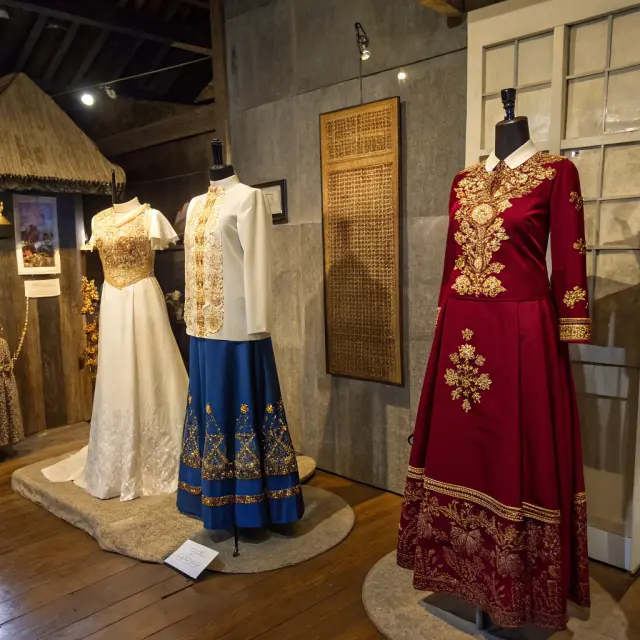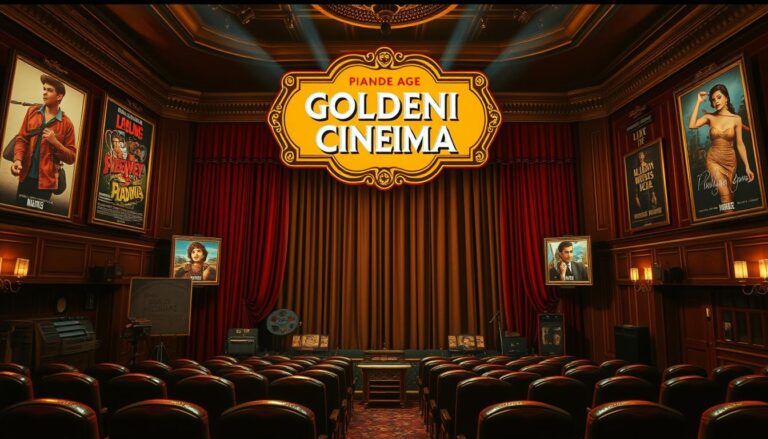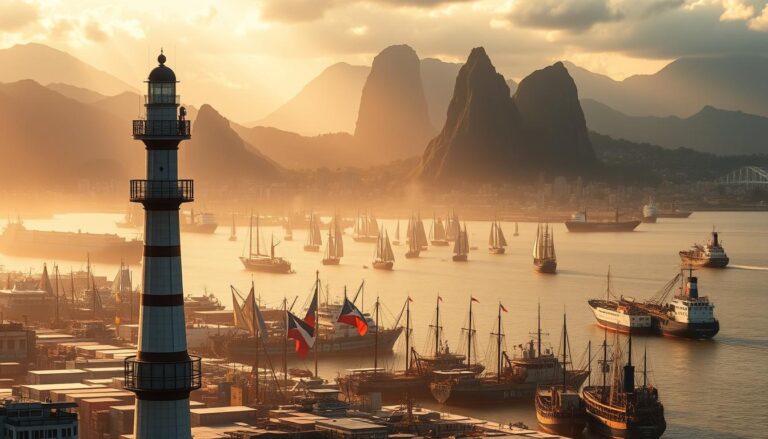Perils at Sea: Surviving the Manila Galleon Voyages

For 250 years, massive wooden ships braved the world’s most treacherous oceans. These vessels, laden with silk, spices, and silver, formed the backbone of a global trade network linking Asia to the Americas. Known as the galleon trade, this system transformed economies and cultures across three continents—but at a staggering human cost.
From 1565 to 1815, Spanish galleons sailed between the Philippines and Mexico. Crews faced typhoons, starvation, and disease during months-long journeys. Overloaded ships like the San Pablo and Santo Cristo de Burgos vanished without a trace, their stories lost to storms or piracy.
Despite the dangers, the trade thrived. Philippine hardwoods built sturdy hulls, while Mexican silver funded empires. Luxury goods flowed eastward, creating wealth for merchants and crowns alike. Yet survival often depended on luck—or sheer willpower.
Key Takeaways
- The galleon trade operated for 250 years, connecting Asia, the Americas, and Europe.
- Ships carried high-value goods like Chinese silk and Mexican silver across the Pacific.
- Up to 40% of voyages ended in disaster due to storms, disease, or poor planning.
- Multiethnic crews reflected the diverse cultures intertwined through this maritime network.
- Philippine resources, including hardwoods and hemp, were vital to ship construction.
Historical Context of the Manila Galleon Trade
In an age of wooden hulls and celestial navigation, Spain’s trans-Pacific trade network reshaped global commerce. This system relied on sturdy vessels crossing vast oceans, carrying fortunes in cargo between continents.
The Birth of a Global Trade Route
Augustinian friar Andrés de Urdaneta cracked the Pacific’s navigation puzzle in 1565. His tornaviaje return route transformed Acapulco into a bustling hub for Asian luxuries. Shipwrights blended European designs with Philippine molave wood, creating hybrid vessels capable of 6-month journeys.
Craftsmen in Cavite and Jalisco built floating warehouses measuring up to 50 meters long. “These naos de China became mobile treasure chests,” notes historian María Luisa Camagay. Their holds carried:
- Mexican silver ingots funding Asian markets
- Chinese silk rivaling European textiles
- Philippine beeswax for cathedral candles
From 1565 to 1815: A Timeline of Maritime Adventures
| Year | Event | Impact |
|---|---|---|
| 1565 | Urdaneta’s route established | Regular crossings begin |
| 1590 | Shipyard founded in Cavite | Local hardwoods used |
| 1700 | Peak trade volume | 40+ vessels active |
| 1815 | Final voyage | Steam ships replace sails |
Guam’s ports became crucial supply stations mid-journey. Sailors traded iron tools for fresh water and tropical fruits. Over 250 years, this network moved enough silver to build empires – and enough spices to flavor continents.
Navigating Treacherous Waters: Maritime Dangers and Shipwrecks
Ocean crossings tested human endurance like few other journeys in history. Sailors faced three enemies: raging storms, faulty maps, and the clock. Over 90% of wrecks occurred along western routes near Philippine islands.

Notable Shipwrecks and Survival Challenges
The San Bernardino Strait became a watery graveyard. Its swirling currents claimed ships like the San Felipe in 1596. Survivors faced starvation while clinging to shattered masts for weeks.
Typhoons proved deadlier than pirates. One 17th-century captain wrote: “Waves taller than cathedral spires swallowed men whole.” Crews rationed moldy biscuits as journeys stretched beyond six months.
| Ship | Year Lost | Cause | Survivors |
|---|---|---|---|
| Santo Cristo de Burgos | 1693 | Oregon coast storm | 14/350 |
| San Pablo | 1568 | Philippine typhoon | 0/200 |
| Beeswax Wreck | 1670 | Navigational error | 22/400 |
Skilled pilots used star navigation to avoid disaster. They memorized wave patterns and seabird flight paths. Their knowledge often meant the difference between safe passage and watery graves.
Recovery efforts rarely succeeded. When the Emily G. Reed sank in 1908, rescuers found only beeswax chunks and porcelain shards – echoes of earlier maritime tragedies.
Surviving the Manila Galleon Voyages
Sea spray stung cracked lips as crews battled endless horizons. These wooden giants carried more than cargo – they transported human determination across unforgiving waters. Personal journals reveal how ordinary men became legends through extraordinary trials.
Accounts of Perils at Sea
In 1696, the San José drifted into Acapulco harbor as a floating tomb. Sailor Miguel de la Cruz wrote: “Bones outnumbered living souls when the coast appeared.” Of 400 crew members, only 22 survived the year-long ordeal through strict rationing.
Soldiers played crucial roles during crises. When the Santa Margarita wrecked in 1600, infantryman Alonso de Contreras organized freshwater collection using sailcloth. His leadership saved 47 lives despite losing 90% of the crew.
| Vessel | Year | Challenge | Survival Tactic |
|---|---|---|---|
| San Agustin | 1690 | Food shortage | Seaweed foraging |
| Victoria | 1565 | Scurvy outbreak | Native citrus trade |
| San Felipe | 1639 | Pirate attack | Hidden cargo holds |
Camaraderie proved vital during the 1670 Beeswax disaster. Sailors formed human chains to bail water for 72 hours straight. Survivors later erected a chapel in Cavite honoring their fallen comrades.
Discipline often meant survival. Ships’ logs show crews who maintained watch rotations during storms had 40% higher survival rates. Those who preserved order amidst chaos frequently lived to recount their harrowing journeys.
Construction and Life Aboard the Galleons
Master shipwrights blended traditions across continents to create floating fortresses. These vessels combined European naval architecture with Asian craftsmanship, designed to withstand both cannon fire and year-long journeys across the Pacific.

Shipbuilding Techniques and Materials
Philippine hardwoods revolutionized maritime engineering. Molave and lanang wood formed hulls so dense they repelled cannonballs. “Filipino artisans perfected joinery that outlasted iron nails,” observes naval historian Carlos Celdran. Key innovations included:
- Reinforced frames using interlocking dungon wood joints
- Waterproofing with resin from local almaciga trees
- Hybrid sails combining European linen with abacá fiber
Spanish designs adapted to Asian resources. Galleons built in Cavite shipyards measured 50% longer than European counterparts, with cargo holds sized for luxury goods like Ming porcelain. Ferdinand Magellan’s navigation charts influenced later hull shapes, optimizing stability for the Acapulco route.
Crew Life and Daily Routines
Over 400 souls crammed into spaces designed for 200. Sailors worked four-hour watches followed by meals of salted pork and biscuit weevils. Survival depended on strict hierarchies:
| Role | Duty | Risk Factor |
|---|---|---|
| Carpenters | Repair leaks | High (deck exposure) |
| Powder monkeys | Gunpowder transport | Extreme (explosions) |
| Surgeons | Amputations | Moderate (disease exposure) |
The route’s six-month timeline forced brutal efficiency. Crews patched sails during typhoons and scrubbed decks with vinegar to prevent rot. Though Ferdinand Magellan never saw these ships, his legacy lived through celestial navigation methods that guided generations across treacherous waters.
The Economic Impact of the Galleon Trade
Treasure ships forged the first truly global marketplace. Their holds carried fortunes that reshaped empires and fueled cross-continental commerce. Silver from Mexico funded Asian markets, while spices from the Moluccas flavored European tables.
Valuable Cargo: Silver, Spices, and Luxury Goods
Spanish ships transported 80% of the world’s silver output during peak trade years. A single voyage could carry 50 tons of silver coins bound for China. In return, vessels brought back:
- 30,000 porcelain pieces per shipment
- 1,200 bales of Chinese silk
- 2,000 pounds of Indonesian cloves
This exchange created ripples across continents. Manila’s walls were built using trade profits, while Mexican corn transformed Filipino farms. Ships like the Santa Ana carried pearls and musk worth two million pesos – enough to bankroll entire cities.
| Cargo Type | Origin | Key Markets | Economic Impact |
|---|---|---|---|
| Silver coins | Mexico | China | Funded Asian empires |
| Cotton textiles | India | Europe | Disrupted local industries |
| Philippine hemp | Luzon | Global | Boosted shipbuilding |
Food supplies dictated voyage success. Ships departing Acapulco carried 6 months’ worth of salted meat and biscuits. Crews traded horses for fresh fruit at Guam, creating early supply chain networks.
Historical manifests reveal shifting priorities. By 1700, silk shipments decreased 40% as European mills improved. Yet demand for spices remained steady, proving luxury goods drove economic policies more than necessity items.
Cultural Exchanges and Influences
Cargo holds carried more than goods—they transported entire cultures across oceans. The galleon network became a bridge for traditions, beliefs, and innovations, blending societies separated by vast seas.
Flavors of Connection
Spices transformed kitchens across continents. Mexican mole sauce gained depth with Asian cinnamon, while Filipino adobo adopted Mexican chili peppers. Sailors bartered recipes as eagerly as silver coins, creating fusion dishes still enjoyed today.
Spanish expeditions introduced chocolate to Asia, but it was Philippine artisans who crafted intricate wooden molds for drinking cups. Mexican silver pesos funded this cross-cultural craftsmanship, circulating through markets from Canton to Lima.
| Region | Cultural Import | Lasting Impact |
|---|---|---|
| Mexico | Chinese porcelain | Cathedral mosaics |
| Philippines | Mexican corn | Agricultural shifts |
| China | Spanish guitars | Folk music evolution |
Religious practices merged unexpectedly. Filipino artisans carved Catholic saints from molave wood using techniques perfected for Buddhist icons. These hybrid artworks became prized exports, shipped alongside crates of cloves and nutmeg.
Language itself transformed through constant contact. Tagalog absorbed 4,000 Spanish loanwords, while Mexican Spanish adopted Malay terms for tropical goods. Each expedition carried lexicons as valuable as their silver cargo.
Food, Provisions, and Culinary Traditions at Sea
Crews battling hunger discovered culinary ingenuity during months-long ocean journeys. Ships carried barrels of salted pork, rice, and hardtack biscuits—staples designed to withstand tropical heat. Stewards managed rations with military precision, doling out daily portions to 400+ crew members.
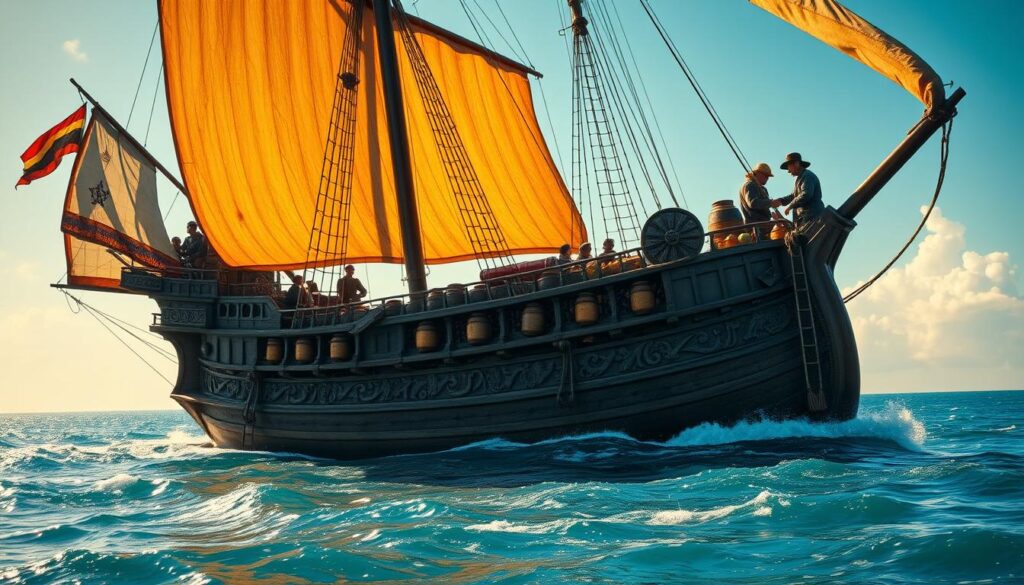
Onboard Preservation Techniques and Supplies
Salt became the lifeline of maritime kitchens. Fish cured in brine lasted 60 days, while pickled vegetables prevented scurvy. Cooks experimented with vinegar solutions to preserve tropical fruits like mangoes, as recorded in a 1673 ship’s log:
| Method | Food | Duration |
|---|---|---|
| Dry salting | Meat | 4 months |
| Barrel pickling | Vegetables | 3 months |
| Honey storage | Fruits | 6 weeks |
Research into food safety led to innovative storage. Sailors hung nets of onions from ceilings to prevent rot. Water casks lined with beeswax kept supplies fresh longer—a technique borrowed from Philippine boat builders.
Fusion Foods: From Lechon to Local Delicacies
Galley fires sparked cultural exchanges. Spanish chorizo gained tangy notes from Filipino vinegar marinades. Cavite’s pinangat na bisugo emerged—fish steamed in banana leaves using Mexican chili spices.
Trading stops introduced new ingredients. Guam’s breadfruit became shipboard pancakes. Mexican corn blended into Philippine sinigang stews during lean days. These fusions live on in modern adobo recipes combining soy sauce and bay leaves.
Quesillo cheese, still made in Cavite today, traces its roots to galleon-era dairy experiments. Sailors’ survival tactics shaped a food legacy now celebrated in fiestas across coastal towns.
Legends, Myths and Survival Stories
Whispers of ghost ships and golden treasures still haunt coastal villages across the Philippines. These tales blend fact with fantasy, preserving memories of courage against impossible odds. Oral histories passed through generations reveal how ordinary men became legends through selfless acts.
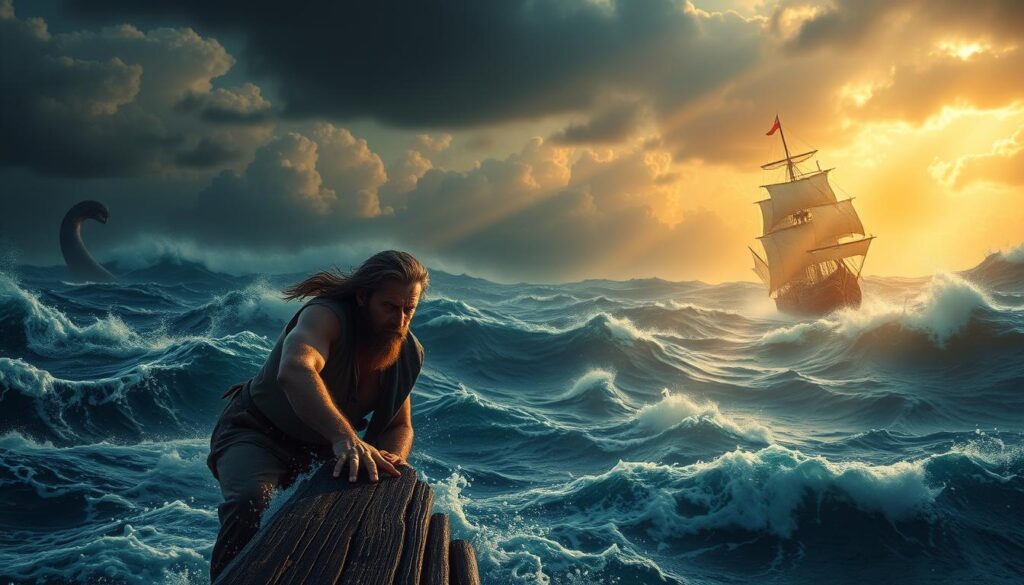
Tales of Heroism and Resilience
One enduring story tells of boatswain Miguel Luz, who guided a crippled ship through a typhoon using only the stars. Historian Carlos Diaz notes: “His crew survived by drinking rainwater caught in torn sails – a detail verified through three independent journals.” Such accounts show how desperation sparked ingenuity.
Gold features prominently in these legends, often symbolizing hope. Fishermen near Mindoro still speak of a sunken chest containing Spanish doubloons. Researchers use these tales to map potential wreck sites, though most treasures remain metaphorical – testaments to human endurance.
| Legend | Heroic Figure | Symbolic Element | Source |
|---|---|---|---|
| Ghost of San Juan | Captain Enrique | Silver cross | Cavite oral histories |
| Golden Mermaid | Navigator Lakan | Gold coin | 18th-century journals |
| The Tidecaller | Boatswain Miguel | Pearl amulet | Mindanao folk songs |
Modern historians use these stories to understand crew dynamics. Dr. Sofia Reyes’ study of 160+ accounts found men who shared food during famines had 70% higher survival rates. Their sacrifices live on in festivals honoring ancestral resilience.
These narratives shape regional identities. In Cebu, children reenact legendary rescues using bamboo rafts. The stories remind communities that courage often outlasts even the deepest gold-filled wreck.
The Enduring Legacy of the Manila Galleon in Philippine History
Centuries-old maritime networks still shape how nations view cultural exchange. The trans-Pacific system created under Miguel López Legazpi transformed isolated islands into global trade hubs. His leadership established a trade route that reshaped Asian and American economies for generations.
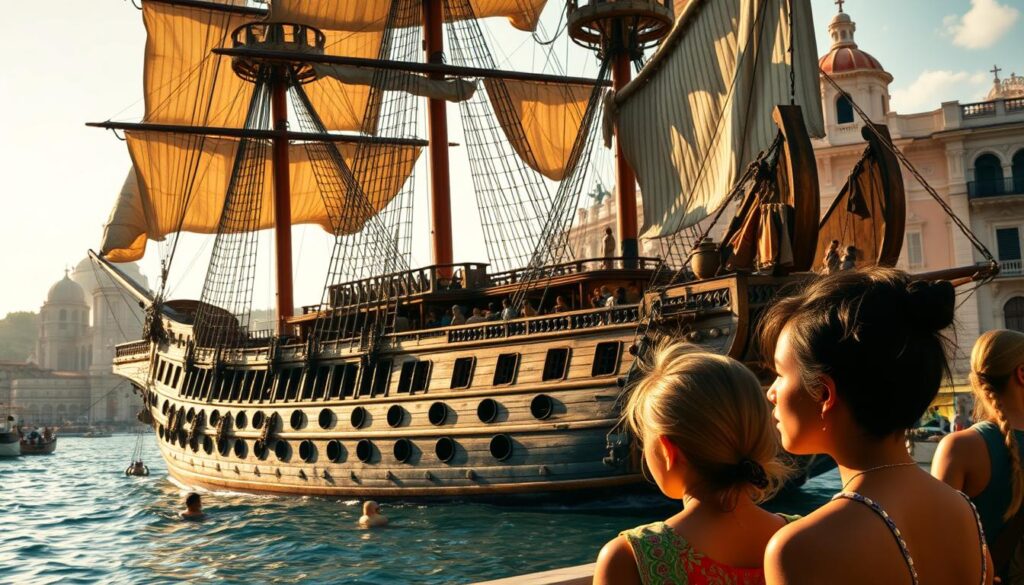
New Spain’s influence reached beyond silver shipments. Colonial policies dictated ship sizes and crew quotas, often prioritizing profit over safety. Despite frequent losses, this network connected continents through shared resources and risks.
| Aspect | Philippine Impact | Global Influence |
|---|---|---|
| Cultural | Mixed-language traditions | Asian-Mexican art fusion |
| Economic | Port city development | Silver standard adoption |
| Political | Colonial governance models | International trade laws |
Archaeological finds like the Beeswax Wreck off Oregon prove how far these ships traveled. Chinese porcelain and Mexican coins found underwater reveal connections forged across Pacific waters. Such discoveries keep historical narratives alive in coastal communities.
Miguel López Legazpi’s blueprint for cross-ocean trade still informs modern diplomacy. Festivals in Cavite celebrate boat-building techniques perfected during New Spain’s rule. These traditions remind Filipinos how daring voyages shaped their national identity.
Today, researchers study cargo manifests to understand early globalization. The trade route left more than sunken treasures—it created bridges between cultures that still endure.
Modern Relevance of an Ancient Trade Route
Modern initiatives are breathing new life into historical maritime corridors that once connected distant continents. Between 1565 and 1815, the Manila Acapulco network shaped global exchange—a legacy now being rediscovered through academic partnerships and cultural projects.
Cultural Revival and Continued Research
Scholars are analyzing 17th-century ship logs to reconstruct climate patterns and trade dynamics. A 2023 study revealed how monsoon winds determined voyage success rates, using data from Spanish Crown archives. These findings help explain why 40% of journeys faced delays or disasters.
Efforts to preserve this heritage gained momentum with the upcoming Manila Acapulco Galleon Museum in the Philippines. The institution will display artifacts like navigational tools and silk fragments, bridging past and present.
| Aspect | 17th Century | Modern Era |
|---|---|---|
| Navigation Methods | Star charts | Digital mapping |
| Cultural Exchange | Silk for silver | Art collaborations |
| Research Techniques | Handwritten logs | 3D wreck scans |
Debates about the Spanish Crown’s role persist. While some highlight economic advancements, others emphasize colonial exploitation. Joint UNESCO proposals by Mexico and the Philippines aim to foster balanced historical narratives through shared preservation projects.
Educational programs now use virtual reality to simulate voyages from 1565 to 1815. Students can “sail” digital recreations of galleons, experiencing challenges faced by crews firsthand—a vivid way to honor this transformative era.
Conclusion
The 16th-century maritime network linking Asia and the Americas reshaped global history through daring ambition. López Legazpi’s vision created arteries of exchange where galleons Acapulco carried silver and silk across hostile seas. These ships would test human limits while forging connections between distant cultures.
Critical ports like Mexico City became melting pots of ideas and goods. Local resources proved vital—Philippine hardwoods built storm-resistant hulls, while Mexican mines funded empires. Though 40% of voyages failed, survivors’ resilience laid foundations for modern trade practices.
Today, archaeologists study porcelain shards and beeswax chunks to understand this era. Digital reconstructions let students experience 16th-century navigation challenges firsthand. Festivals in Cavite honor hybrid traditions born from these oceanic journeys.
The legacy endures in unexpected ways. Filipino adobo’s Mexican chili roots and Guam’s shipwreck legends remind us how Miguel López de Legazpi’s system transcended commerce. As researchers decode weather patterns from old logs, these wooden giants continue teaching lessons about risk, reward, and cultural exchange.

